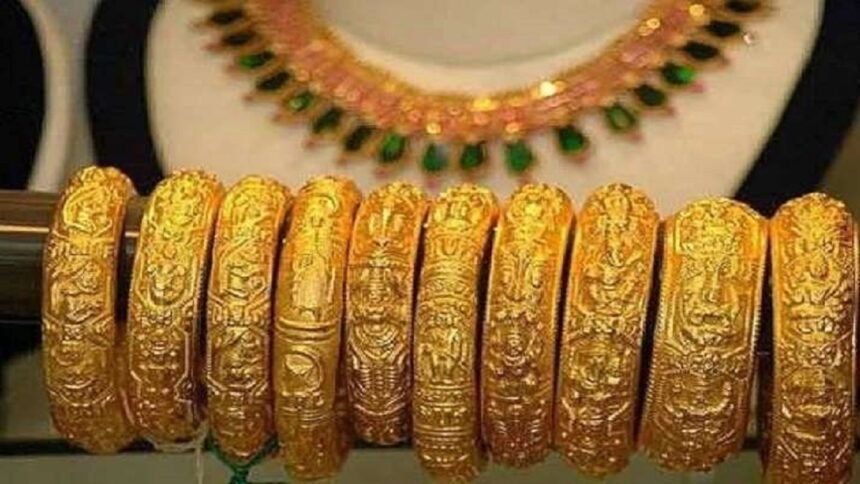Gold prices in the national capital experienced a noteworthy decline of Rs 550 to reach Rs 59,700 per 10 grams on Thursday, reflecting the impact of weak global trends. This drop followed the previous trade where the precious metal concluded at Rs 60,250 per 10 grams. Furthermore, silver faced a significant tumble of Rs 900, resulting in its price reaching Rs 72,600 per kilogram.
The decrease in gold prices can be attributed to the influence of weak global trends, which have had a notable impact on the precious metal market. Factors such as changes in global economic conditions, geopolitical tensions, and fluctuations in currency values often contribute to shifts in gold prices. In this case, the weakening global trends have led to a decline in gold prices, affecting the domestic market as well.
Investors and traders closely monitor global trends and market conditions to make informed decisions regarding gold investments. The drop in gold prices presents both challenges and opportunities for market participants. While existing gold holders may experience a temporary decline in the value of their investments, it could be an opportune moment for prospective buyers to enter the market and capitalize on the lower prices.
The decline in silver prices also follows the overall trend in the precious metals market. Silver, often considered the more volatile sibling of gold, tends to exhibit larger price fluctuations. The decrease of Rs 900 in silver price per kilogram further highlights the impact of weak global trends on the broader market.
However, it is important to note that the prices of gold and silver are subject to various factors, both global and domestic. Market analysts and experts constantly assess and analyze these factors to provide insights and predictions on future price movements. Investors and individuals interested in the precious metals market rely on such analyses to make informed decisions.
Gold and silver, apart from being traditional storehouses of value, also serve as indicators of market sentiment and economic stability. As a safe-haven asset, gold tends to attract investors during times of economic uncertainty or inflationary concerns. Conversely, in times of economic growth and stability, investors may shift their focus to riskier assets, potentially leading to a decrease in gold prices.
The current drop in gold prices in the national capital provides an opportunity for jewelry buyers and enthusiasts to acquire the precious metal at a relatively lower cost. Those interested in gold jewelry or investment-grade gold coins and bars may find this price decline favorable for their purchases. However, it is crucial for buyers to exercise caution and conduct due diligence when making any investment decisions.
While short-term price fluctuations can be influenced by global trends, long-term movements in the precious metals market are shaped by a multitude of factors. These include economic indicators, central bank policies, inflationary pressures, and demand-supply dynamics. Therefore, investors are advised to adopt a long-term perspective and seek professional advice when considering precious metals as part of their investment portfolio.
The decline in gold prices by Rs 550 in the national capital, along with the decrease in silver prices, can be attributed to weak global trends. Such fluctuations in precious metal prices present both challenges and opportunities for market participants. It is important to closely monitor market conditions and seek expert guidance to make well-informed investment decisions in the precious metals market.




